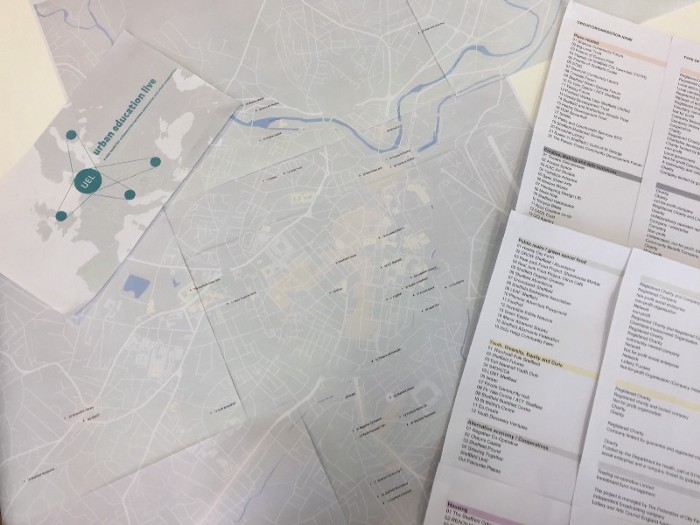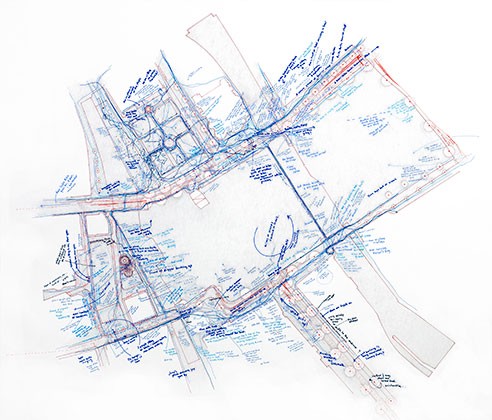Learning about space through socio-spatial mapping
Urban Education Live Project partner Sheffield School of Architecture (SSoA) is currently working on a Sheffield-specific map of existing initiatives, groups, organisations and other local practices in an ongoing process throughout the duration of the research project. The initial aim of building this ‘Network of Practices’ is to explore the current situation of grassroot organisations in the city of Sheffield: their ways of operating and the main barriers they encounter in their work. This exploration leads towards more specific issues regarding the transformative aspects of the groups’ work in the city.

One of the vehicles for fostering dialogue and increasing online media presence of the organisations is continuous work on recording and visually representing the socio-spatial aspects of the city. Sheffield groups, organisations and initiatives are invited to share their stories within a broader context — connecting their work with a wider audience and inspiring each other to create new collaborations.
SSoA Live Works hub
The process of building the ‘Network of Practices’ is closely related with the work done through the SSoA hub — an extension of the University in the city centre called Live Works — set up as a collaboration venue for communities, research, policy and practice. Live Works activities build on the demonstrable history of acting as a local catalyst for collaborations between Sheffield City Council, local schools, arts organisations, local charities, volunteer groups and the University. With opening up future possibilities of co-production of urban space, the Live Works hub functions as a location for enabling productive and effective collaborations between various stakeholders.
Anticipated visitors, participants, passers-by and anyone who is interested in visiting Live Works will soon also be able to feed their stories and spatial representations directly into the socio-spatial map. The tool for mapping will accommodate direct feeding into the database, whether the representations are visual, audial, textual, digital or hand-made. Combining various modes of data with a digital platform presents a specific challenge, so we are currently exploring possibilities of how different types of data (such as images, short conversations, comment cards, quotes, etc) can relate to the concrete urban space and how they can also record the process of mapping.
It is of key importance that mapping captures the convergence between the social reality of space and the space itself, so the term ‘mapping’ could here be extended to a complex and multi-layered representation of the finer levels of social space.
Some examples of similar multi-layered socio-spatial visual representations include the works of Stefan Al, architectural ethnography by Atelier Bow Wow, Larissa Fassler Kotti, Raumlabor and the SSoA ImagineCastlegatephysical model of Sheffield. These processes of capturing the socio-spatial qualities of space are vital for making visible and understanding better the tangible layers of cities, and sharing knowledge through connecting the city.

Operation and Evaluation
In the context of the overarching research project Urban Education Live, we frame the socio-spatial mapping process as a stepping stone towards evaluating the impact of Sheffield hub operation and related activities. Defining and testing impact indicators through encounters and events at Live Works will help us map the progress of the project Work package 3: Operating and Evaluating.
